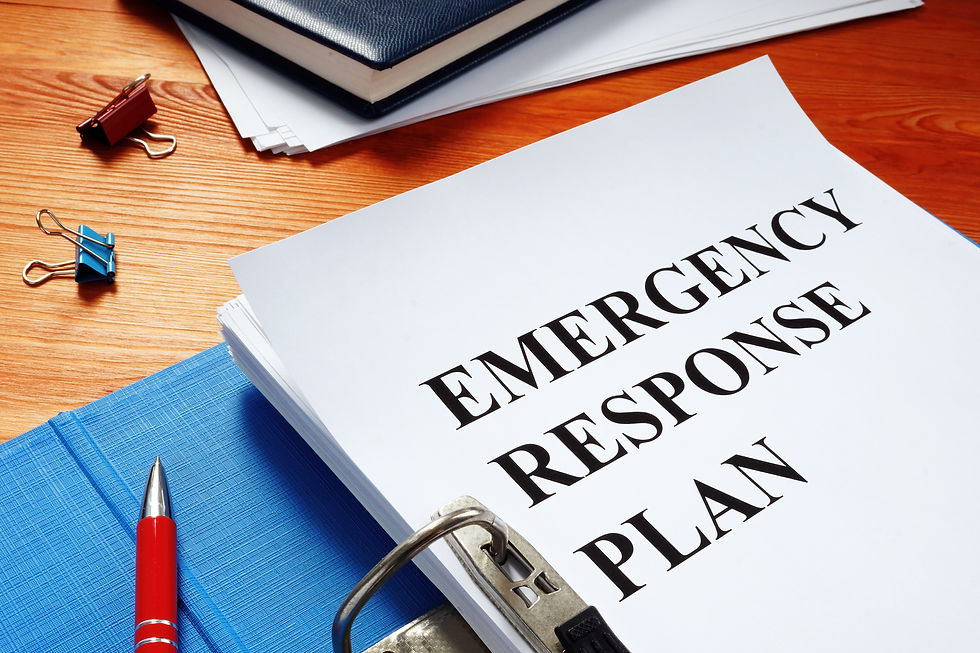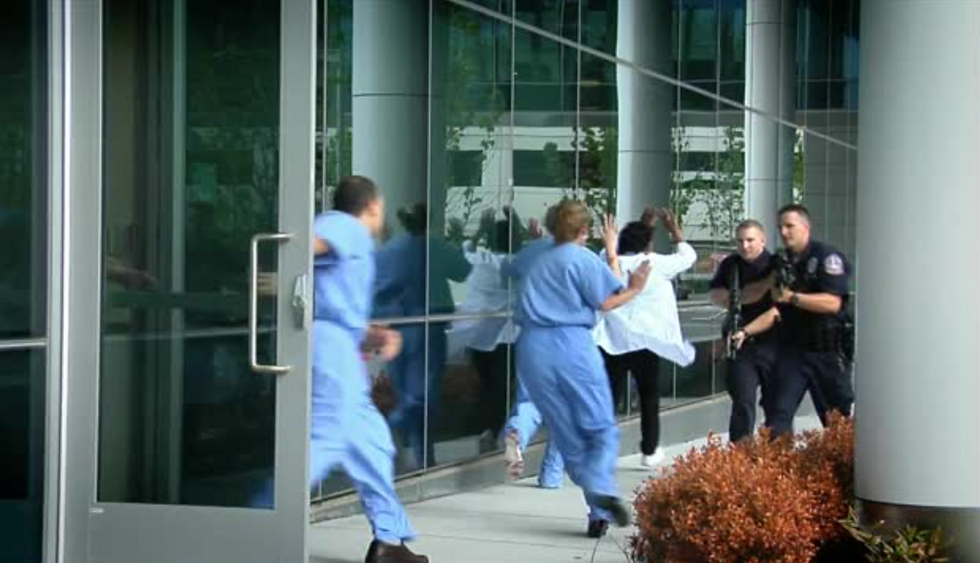Healthcare's New Threat: Workplace Violence Prevention for Healthcare & Social Service Workers Act
- gene423
- Jul 18, 2022
- 5 min read

According to 2018 data from the U.S. Bureau of Labor Statistics, healthcare employees are involved in 73% of all nonfatal workplace violence incidents.
Our history is rife with workplace violence against healthcare professionals. Healthcare workers have endured workplace violence for decades, both in tragic and nonfatal events. A median of 20 instances, or 73% of those recorded in 2018, were fatal. Only incidents of workplace violence reported by healthcare employees are included in the data. More unreported cases actually go unrecognized by organizations or the healthcare sector as a whole.
As the instances spread internationally, the safety risk to healthcare workers became a top concern for the sector. The most important factor contributing to the escalation of these occurrences is the ineffectiveness of the current workplace violence prevention measures. Because of this, on April 16, 2021, the U.S. House of Representatives approved H.R. 1195, the Workplace Violence Prevention for Health Care and Social Service Workers Act.
It represents the following development in enhancing workplace violence prevention and safeguarding the security of healthcare employees. Numerous government and private sector organizations have made numerous attempts to develop a regulation that would place a high priority on preventing workplace violence.
However, until H.R. 1195, a bill that protects all of a healthcare professional's rights to speak out against workplace violence and stop future incidences, these were all unsuccessful attempts.

What is the Workplace Violence Prevention for Health Care and Social Service Workers Act?
It is a recently proposed legislation that is designed to curb the rising epidemic of violence against healthcare workers. The bill places the federal Occupational Safety and Health Administration (OSHA) in charge of setting regulations and standards requiring healthcare facilities to create a strategy designed to safeguard their employees from workplace violence.
At the time of this writing, it has been passed by the House of Representatives and is in Committee in the Senate. The bill has picked up support with the recent active shooter incident at Saint Francis Hospital in Tulsa, OK.
When will it go into effect?

Upon enactment of the Act, the Secretary of Labor will have no more than one year to issue an interim standard.
The interim standard will go into effect no more than 30 days after issuance by the Secretary of Labor. The act will be fully enforceable at this time.
The Secretary of Labor will have a total of 42 months to issue the final standard.
What healthcare facilities fall under this proposed law?
The Act identifies the following “covered facilities:”
Any hospital, including any specialty hospital, in-patient or outpatient setting, or clinic operating within a hospital license, or any setting that provides outpatient services.
Any residential treatment facility, including any nursing home, skilled nursing facility, hospice facility, Alzheimer’s and memory care facility, and long-term care facility.
Any non-residential treatment or service setting.
Any medical treatment or social service setting or clinic at a correctional or detention facility.
Any community care setting, including a community-based residential facility, group home, and mental health clinic.
Any psychiatric treatment facility.
Any drug abuse or substance use disorder treatment center.
Any independent freestanding emergency centers.
Any facility described in clauses (i) through (viii) operated by a Federal Government agency and required to comply with occupational safety and health standards pursuant to section 1960 of title 29, Code of Federal Regulations (as such section is in effect on the date of enactment of this Act).
Any other facility the Secretary determines should be covered under the standards
How much will this law cost covered facilities?

This Act brings with it a significant challenge to those covered by it. The effects are sweeping and compel facilities to create comprehensive prevention polices, physical/environmental changes, improved security features, training and record keeping updates, and specific guidelines protecting those who report incidents.
The Congressional Budget Office analyzed the bill and its findings on the economic impact are staggering. Annual net cost to private facilities is estimated to be at least 1.8 billion within the first 24 months, then 750 million annually afterwards. Annual net cost to public facilities is estimated to be at least 100 million within the first 24 months, then 55 million annually afterwards.
What happens if you don’t comply?

The Act assigns OSHA the responsibility to create, investigate, and enforce the standard. There is no specific language in the bill addressing non-compliance, however, current OSHA fines are set as follows:
Additionally, non-compliance could impact reimbursements from CMS, and/or disqualify a facility from Federal Grants and funding.
What can be done now to prepare?

1. Review Existing Policies on Workplace Violence
Healthcare organizations should review existing workplace violence policies to conduct research and identify loopholes in their existing strategies.
Policy should include at the bare minimum:
Educating healthcare professionals about dangerous situations.
Include a clear definition of workplace violence and procedure to report incidents.
Explain the precise plan to respond to and investigate all reported fatal and nonfatal incidents.
Establish training standards and frequency.
Document record-keeping and post-incident reviews.
2. Provide Training to Healthcare Workers
Staff training should include at minimum:
De-Escalation Techniques
Training to assess and de-escalate a potentially violent workplace situation can prevent many cases. Going against human nature during a frightful situation and staying calm requires proper understanding and practice of de-escalation techniques.
Situational Awareness
This training would prepare healthcare workers to identify workplace violence. If it has been normalized in a particular workplace, the training will enlighten the workers to identify unsafe situations as harmful or dangerous.
Stress Management
Violence against healthcare employees is unavoidable, given the volatility of the environment. Workers must be trained to manage stress during a potentially dangerous occurrence. It will keep them level-headed without losing control of their emotions or the situation at hand.
Security Procedures
Awareness about the in-house security procedures can help healthcare workers to establish authority during a violent incident. A training program helps them learn all the necessary procedures to follow when someone threatens their safety.
3. Threat Assessment

Differentiating between fatal and nonfatal workplace violence situations is essential for the safety of healthcare professionals. Not only in terms of workers, but employers also need to assess a threat and determine how dangerous it is.
This is where the Workplace Violence Prevention for Health Care and Social Service Workers Act would help with its standard approach. Threat assessment would identify vulnerabilities and correct them using the appropriate security measure such as alarms, panic buttons, access control, monitoring systems, and lighting.
Ensuring a proper signage system is established within a healthcare organization also improves workplace violence prevention. The signage will mark exits, restricted areas, and evacuation routes.
Is there a company that can help us manage these changes?

Survival Response LLC, a leading expert security consulting company, answers the call with a new program to minimize the potential threat to healthcare professionals.
“It’s time for a holistic approach to reducing the violence against our healthcare workers,” says Gene Petrino, founder of Survival Response LLC.
The program is designed to fill the gaps left by ineffective and antiquated strategies. Not only does it focus on ensuring the safety of workers, but also on improving morale and minimizing potential damages and costs incurred. The goal is to educate participants to recognize the elements of workplace violence, lower their risk of being in such a dangerous situation, and teach them how to survive.
The program touches on effective response techniques developed from over 50 combined years of law enforcement expertise and real-world experiences. It also features lessons on situational awareness, de-escalation techniques, threat assessments, and the legalities involved in preventing workplace violence. This includes policy development or having a clear reporting structure for workplace violence, post-incident review reporting, investigation, and documentation.
While most cases aren’t fatal, the consequences of nonfatal incidents are still dire. They can lead to mental health conditions such as PTSD, depression, anxiety, poor self-esteem, and burnout. It can also profoundly impact one’s professional growth and the quality of care to patients.
Like all other employees, healthcare workers have a right to a safe workplace.







Comments